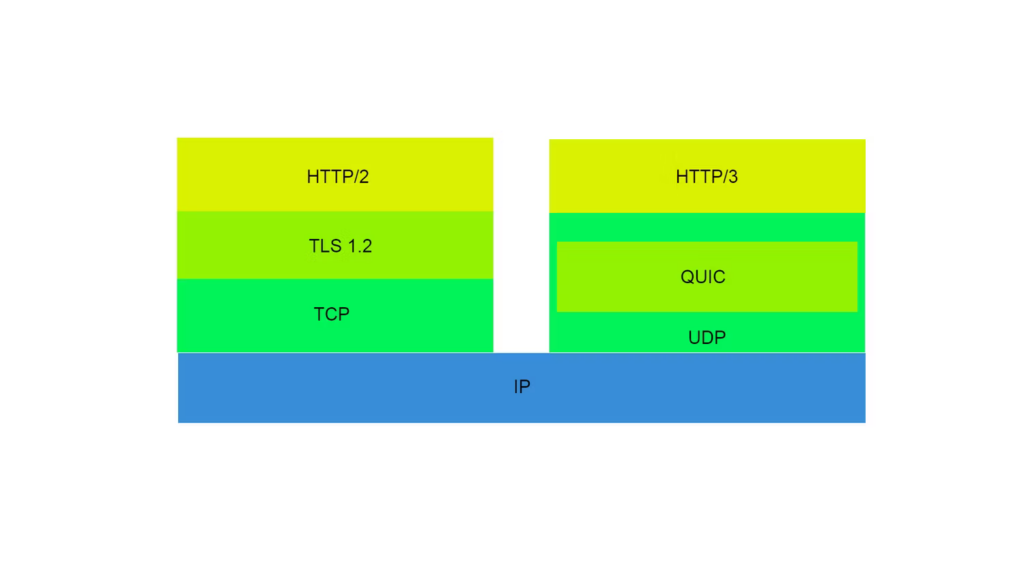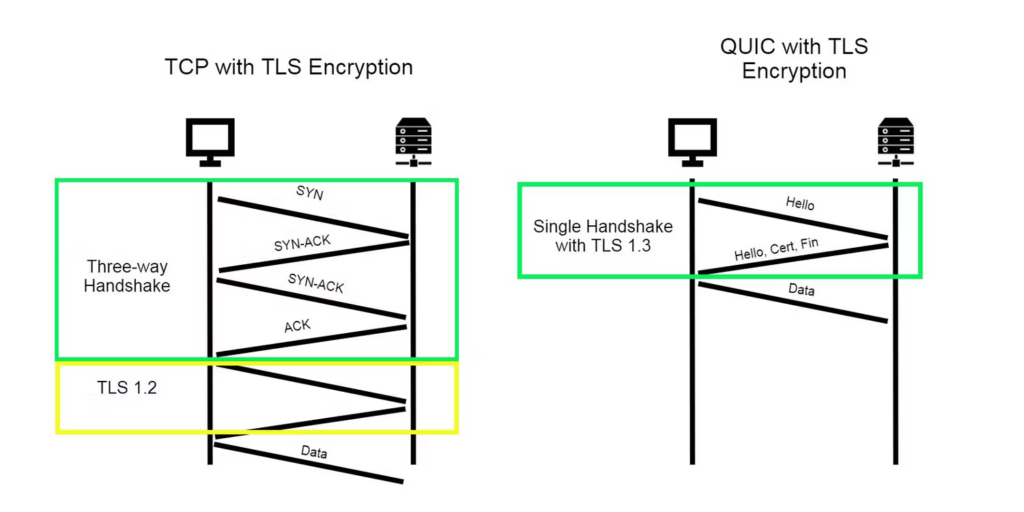The most recent version of HTTP, HTTP/3, is the quickest one yet. And are u curious about HTTP/3?
In the past, the general public mostly visited blogs and chat rooms using web browsers. Today, visiting the internet allows you to do a lot of things, such view 4K films, edit images, play games, shop, bank, and work.
The need for a more secure and effective internet protocol has pushed for the creation of HTTP/3 as new web apps become more complicated.
What is HTTP/3 then? How is it superior to earlier iterations, and how does it change how you browse?
What Is HTTP/3?
The third (and most recent) iteration of HTTP (Hypertext Transfer Protocol). This internet protocol is utilized at the application layer, where users may engage with the resources on the web. With HTTP/3, you may access the internet more quickly and effectively without sacrificing security.
The only reliable data transfer method available to consumers and developers with the prior HTTP/2 was TCP/IP. The issue with TCP is that many SYN-ACK connections are required for the client and server to fully setup. Client and server cannot transfer data to one another until after the handshake and TLS connection.
Users who access the internet experience slower load times because the process takes about four “round trips” from client to server. This issue will be resolved by HTTP/3’s more recent features.
Key features of HTTP/3 include:
- For security, HTTP/3 has built-in TLS 1.3 encryption.
- Instead to HPACK, QPACK compresses requests and headers.
- offers with QUIC quick and dependable single handshake connections.
- For more streamlined data transfers, flow control is applied to all frame headers and payloads (data).
How Fast, Reliable, and Secure Connections Are Made Possible by HTTP/3
Support for the QUIC protocol, a new internet protocol designed to replace TCP connections, is one of HTTP/3’s benefits. After a single handshake, the client and server use QUIC to send and receive data. As HTTP/3 has built-in TLS 1.3 encryption, this single handshake offers a dependable connection from both sides and instantly encrypts data.

According to a Request Metrics research, using QUIC to establish connections and encrypt data is a quicker and more effective method than using TCP. The experiment demonstrates the superiority of QUIC’s single handshake over TCP’s three-way handshake and encryption.

How then is it feasible to establish a quick, dependable, and secure connection with just one handshake?
To respond to the query, let’s first contrast how HTTP/2 and HTTP/3 transport data.
As seen in the graphic above, HTTP/3 makes use of the quick but erratic UDP connection. Unknown to many, UDP sacrifices reliability in favor of establishing a connection quickly with a single handshake or one round trip.
For a secure connection, QUIC uses native multiplexing, packet inspection, and recovery protocols to address UDP’s problems. The HTTP/3 auto TLS protocol offers seamless encryption at the same time without requiring additional back and forth communication between the client and server.
We get a quick, dependable, and secure connection with UDP’s single-handshake connection, QUIC’s native multiplexing, and HTTP/3’s auto TLS connection, which ultimately improves user experience.
What Will Be the Impact of HTTP/3?
As we’ve already established, HTTP/3 will provide you a quicker, more reliable internet connection, which will enhance your experience. How much more or less is the query.
The same Request Metrics research examined how quickly data was transmitted on three different-sized websites, including a tiny site, a content site, and a single-page site. It also demonstrated how quickly web pages loaded while utilizing HTTP/2 and HTTP/3.
This is the outcome:
| Small Site | Content Site | Single-Page Site | |
| HTTP/2 | 500ms | 1000ms | 600ms |
| HTTP/3 | 100ms | 675ms | 300ms |
In all test sites, the data demonstrate that HTTP/3 was much quicker than HTTP/2. For instance, HTTP/3 was 200ms quicker than HTTP/2 on tiny sites, 325ms faster on content sites, and 300ms faster on single-page sites.
Users may anticipate a large overall decrease in latency when utilizing HTTP/3, making surfing quicker and more dependable without sacrificing security.
HTTP/2 Will Be Replaced by HTTP/3
Overall, HTTP/3 is the current industry standard in use. Therefore, since you’re presumably already utilizing it, end consumers don’t need to do anything to profit from it. In fact, you could already be utilizing the QUIC protocol as Google has already included it in the majority of its online services and applications.
Frequently Asked Questions
1. What distinguishes HTTP from HTTP2?
Both HTTP/1.1 and HTTP/2 compress HTTP messages to make them smaller and speed up online performance. HPACK, a more sophisticated compression technique used by HTTP/2, gets rid of extraneous data from HTTP header packets. Each HTTP packet is reduced by a few bytes as a result. hope you got the answer.
2. How is http 3 superior?
With HTTP/3, you may access the internet more quickly and effectively without sacrificing security. The only reliable data transfer method available to consumers and developers with the prior HTTP/2 was TCP/IP. The issue with TCP is that many SYN-ACK connections are need for the client and server to fully setup.
3. What does HTTP2 mean?
In essence, HTTP/2 multiplexes all of the communication between HTTP and TCP connections into an exchange of frames that are binary-encode and then mapped to messages that are specific to a stream. I expect you can get a good idea by going through this answer.



